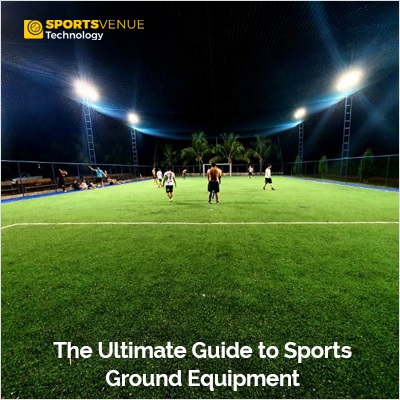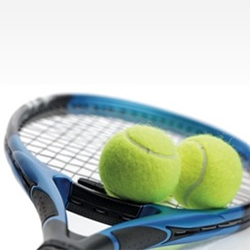The Ultimate Guide to Sports Ground Equipment

Sports ground equipment plays a vital role in ensuring the safety, functionality, and aesthetics of sporting venues. From maintaining playing surfaces to providing essential amenities for athletes and spectators, the right equipment is essential for a successful sports facility. This ultimate guide will explore the different types of sports ground equipment, their importance, maintenance strategies, and emerging trends in the field.
I. Types of Sports Ground Equipment
Playing Surfaces
Playing surfaces are fundamental to sports venues, directly impacting gameplay and player safety. Natural grass, despite its high maintenance requirements, remains a preferred choice for its authentic feel and playability. It provides a softer landing surface, reduces heat buildup, and offers a more traditional experience. On the other hand, synthetic turf has gained popularity due to its durability, all-weather usability, and lower maintenance needs. It allows for consistent playing conditions throughout the year, making it suitable for sports like soccer and football that require reliable surfaces. Clay courts, commonly used in tennis, offer players a consistent bounce and surface grip, enhancing the quality of gameplay. Artificial clay surfaces combine the benefits of natural clay with easier maintenance and longer lifespan, making them a viable option for tennis clubs and recreational facilities.
Field Markings
Field markings are essential for delineating playing areas, boundaries, and scoring zones in various sports. Lines and boundary markers help players and officials determine legal play areas and enforce rules effectively. Clear and visible markings contribute to fair gameplay and reduce disputes during matches. Goal posts and nets are crucial elements in sports like soccer, rugby, and field hockey, providing visual targets for scoring and defining the goal area. Properly installed and maintained goalposts enhance player safety by minimizing the risk of structural failure during intense gameplay.
| Also Read: Essential Gear for Sports Grounds: A Guide to Sports Ground Equipment |
Safety Equipment
Safety equipment plays a vital role in protecting athletes, spectators, and the integrity of sports facilities. Padding and safety netting are used to cushion impact and prevent injuries caused by collisions with hard surfaces or objects. They are commonly installed around playing areas, spectator stands, and other high-risk zones to mitigate potential hazards. Goal-padding is essential in sports like football and rugby, where players often collide with goal posts during matches. Well-designed and adequately padded goalposts reduce the risk of head and body injuries, ensuring a safer playing environment for athletes.
| Also Read: Enhancing Performance: The World of Sports and Exercise Fitness Equipment |
Athlete Amenities
Athlete amenities contribute to the overall comfort and convenience of sports venues, enhancing the experience for players, coaches, and support staff. Benches and dugouts provide seating and shelter for teams during games and practices, offering a designated area for rest and strategy discussions. Water stations are crucial for keeping athletes hydrated and maintaining their performance levels during training sessions and competitions. Accessible and well-maintained water stations promote hydration and reduce the risk of heat-related illnesses among athletes. Scoreboards are integral to modern sports facilities, displaying real-time scores, game statistics, and other relevant information for players and spectators.
Maintenance Tools
Maintenance tools are essential for preserving the quality and functionality of sports grounds, ensuring optimal playing conditions and safety standards. Mowers and turf equipment are used to trim grass, maintain turf height, and promote healthy growth on natural playing surfaces. Proper mowing techniques contribute to uniform surface coverage and enhance ball roll characteristics in sports like golf and soccer. Drag mats and groomers are essential for smoothing out and leveling playing surfaces such as baseball infields, reducing unevenness, and improving player traction. Aeration equipment helps improve soil health, drainage, and root development, preventing compaction and waterlogging on sports fields.
II. Importance of Sports Ground Equipment
Safety
Safety is paramount in sports venues, with proper equipment playing a crucial role in injury prevention and risk mitigation. Well-designed playing surfaces, safety padding, and equipment barriers reduce the impact of collisions and falls, protecting athletes from serious injuries. Regular maintenance and inspection of equipment ensure compliance with safety standards and guidelines, minimizing potential hazards and liability issues for sports organizations. Adequate safety measures instill confidence in players, coaches, and spectators, fostering a secure and enjoyable sports environment.
Performance
The quality of sports ground equipment directly influences the performance of athletes and the overall competitiveness of sporting events. Well-maintained playing surfaces provide consistent ball bounce, traction, and footing, allowing athletes to perform at their best. Properly marked fields and goal areas facilitate fair play and accurate scoring, enhancing the integrity of sports competitions. High-performance equipment, such as specialized training gear and fitness amenities, supports athlete development, conditioning, and injury prevention, contributing to improved performance outcomes over time.
Player Experience
The player experience encompasses various factors, including comfort, convenience, and amenities available at sports venues. Athlete amenities such as benches, water stations, and locker rooms enhance the overall experience by providing essential facilities for rest, hydration, and preparation. Clear and visible field markings, scoreboards, and digital displays improve game awareness and engagement for players and spectators alike. A well-maintained and aesthetically pleasing sports environment creates a positive impression and encourages participation, loyalty, and support from athletes, fans, and sponsors.
Longevity
Investing in quality sports ground equipment and implementing effective maintenance practices contribute to the long-term sustainability and durability of sports facilities. Regular inspections, cleaning, and repairs extend the lifespan of equipment, reducing the need for costly replacements and upgrades. Proactive maintenance also prevents minor issues from escalating into major problems, minimizing downtime and disruptions to sporting activities. Sustainable equipment management practices, such as recycling, refurbishment, and eco-friendly materials, promote environmental stewardship and resource conservation in sports infrastructure development.
Professionalism
The professionalism of sports organizations is reflected in the quality, functionality, and aesthetics of their sports grounds and equipment. High-quality equipment demonstrates a commitment to excellence, safety, and innovation in sports facility management. Compliance with industry standards, regulations, and best practices reinforces the credibility and reputation of sports venues and governing bodies. Professionalism also extends to the training and competency of staff responsible for equipment maintenance, operations, and safety protocols, ensuring smooth and efficient facility management processes.
III. Maintenance Tips for Sports Ground Equipment
Regular Inspections
Conduct regular inspections of sports ground equipment to identify signs of wear, damage, or malfunction. Inspect playing surfaces, safety barriers, goalposts, and amenities for structural integrity and functionality. Address any issues promptly to prevent safety hazards and maintain operational efficiency.
Cleaning and Sanitization
Keep sports ground equipment clean and sanitized to promote hygiene, prevent bacterial growth, and ensure a safe environment for athletes and spectators. Use appropriate cleaning agents, disinfectants, and maintenance protocols recommended by manufacturers.
Lubrication and Greasing
Lubricate moving parts, hinges, and mechanical components of sports equipment to reduce friction, prevent corrosion, and prolong their lifespan. Use compatible lubricants and greases as per equipment specifications and maintenance guidelines.
Seasonal Maintenance
Adjust maintenance activities based on seasonal changes, weather conditions, and usage patterns of sports facilities. Implement winterization procedures for outdoor equipment exposed to cold temperatures, snow, and ice. Inspect and repair equipment before the start of each sports season to ensure readiness and functionality.
Training and Education
Provide training and education to staff members responsible for sports ground equipment maintenance, operations, and safety protocols. Train staff on proper equipment use, maintenance procedures, emergency response, and compliance with regulatory requirements. Encourage ongoing learning and skill development to enhance equipment management practices and efficiency.
IV. Future Trends in Sports Ground Equipment
Smart Technology Integration
The integration of sensors, IoT devices, and data analytics will revolutionize sports ground equipment management. Smart sensors will monitor equipment performance, detect anomalies, and automate maintenance tasks. IoT platforms will provide real-time data insights, predictive maintenance alerts, and optimization strategies for energy efficiency and resource utilization.
Sustainable Materials
The adoption of sustainable materials and practices in sports ground equipment design and manufacturing will reduce environmental impact and promote circular economy principles. Recycled materials, biodegradable components, and eco-friendly coatings will become standard in new equipment solutions. Green certifications and sustainability standards will drive innovation and market demand for environmentally responsible equipment options.
Modular Designs
Modular and adaptable equipment designs will offer flexibility, scalability, and customization options for sports venues. Modular structures, seating arrangements, and amenities will cater to diverse event requirements, audience sizes, and user preferences. Flexible layouts and interchangeable components will optimize space utilization and resource allocation in multi-use sports facilities.
Virtual Reality Training
Virtual reality (VR) technology will revolutionize athlete training and skill development, reducing reliance on physical grounds and equipment. VR simulations will enable athletes to practice game scenarios, improve decision-making, and enhance performance in a virtual environment. VR training programs will complement traditional coaching methods and provide personalized feedback for skill enhancement and injury prevention.
Customization and Personalization
Customized and personalized equipment solutions will cater to specific sports, venue layouts, and user preferences. Custom branding, color schemes, and branding options will enhance the aesthetics and identity of sports facilities. Personalized equipment features, such as adjustable settings, ergonomic designs, and user-friendly interfaces, will improve usability, comfort, and accessibility for athletes of all ages and abilities.
Conclusion:
In conclusion, sports ground equipment is a critical component of sports facilities, impacting safety, performance, and overall user experience. By understanding the different types of equipment, their importance, maintenance requirements, and future trends, sports organizations can ensure top-notch facilities that meet the evolving needs of athletes and fans.





